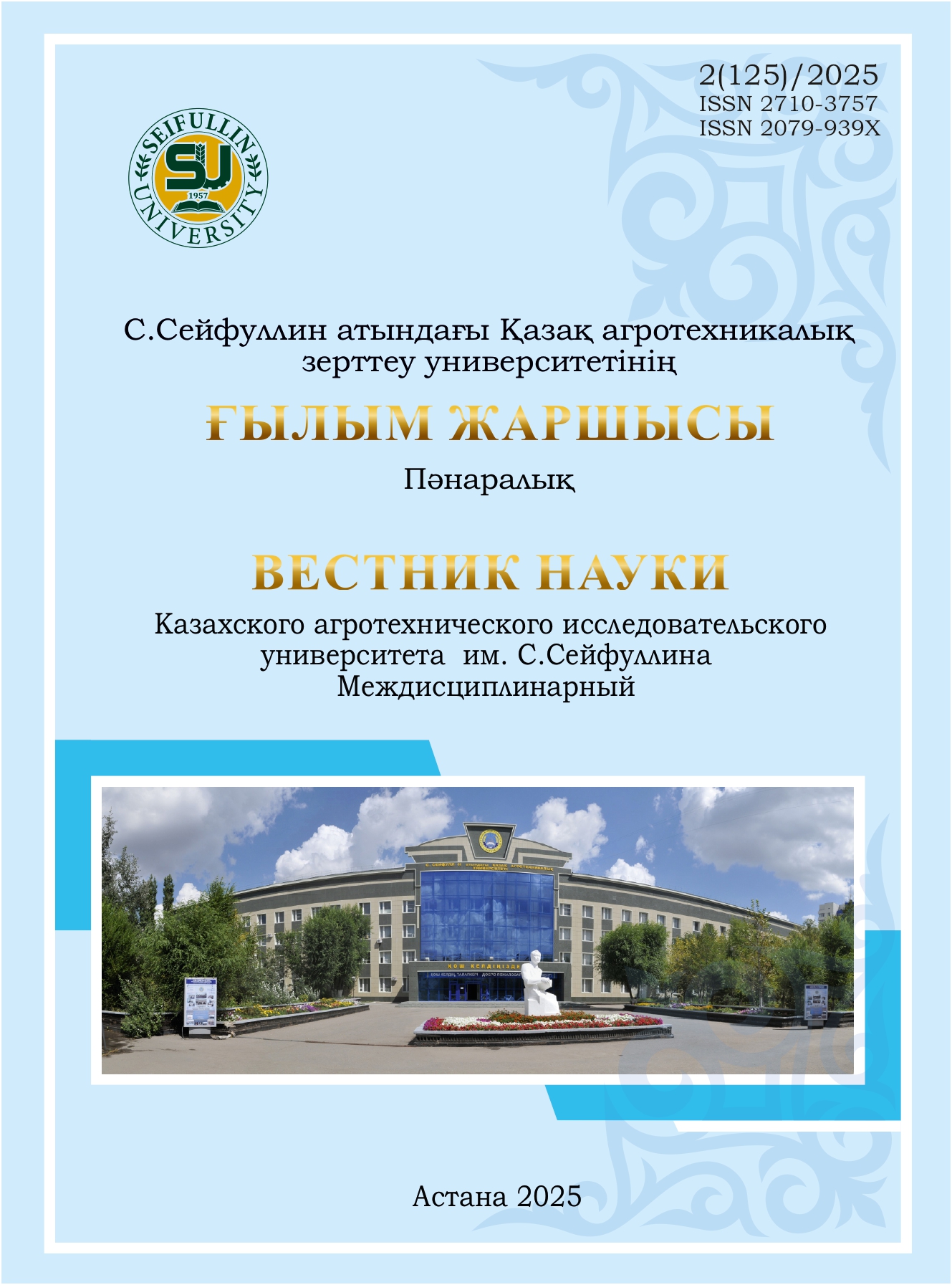Experience of feeding african catfish with extruded compound feeds containing phytobiotics
DOI:
https://doi.org/10.51452/kazatu.2025.2(125).1888Keywords:
extruded compound feeds; recirculating aquaculture system; African catfish; phytobiotics.Abstract
Background and Aim. With the rapid development of aquaculture in the Republic of Kazakhstan, the demand for high-quality fish feed is steadily increasing. Strict requirements for protein and fat content, combined with the need to enhance nutritional value, digestibility, and safety through barothermal processing and enrichment with bioactive components such as phytobiotics, necessitate the development of new types of extruded feeds for African catfish (Clarias gariepinus). This study aimed to evaluate the effects of an extruded compound feed enriched with the phytobiotic 'BioFeed-P' on the growth performance and survival rate of African catfish. The study was conducted in 2024-2025, and involved feeding African catfish with extruded compound feeds containing phytobiotics. The phytobiotic "BioFeed-P" was used as a plant-derived bioadditive. The nutritional value of the extruded, enriched compound was determined, and the organoleptic and physicochemical properties of the finished feed were studied. Based on the chemical composition and nutritional value of the selected components, formulations for commercial production compound feeds for African catfish were developed.
Materials and Methods. The nutritional value of the extruded, enriched compound feed was determined using a FOSS NIRSDS 25000 analyzer. The organoleptic and physicochemical properties of the finished feed were studied in accordance with the requirements of GOST 10385-2014, “Compound feed for fish”. To characterize the intensity of fish growth, absolute, relative, and average daily weight gains were used, as well as Fulton’s condition factor for fish.
Results. Feed formulations enriched with the phytobiotic BioFeed-P were developed, the feed production technology was optimized, and its effect on fish growth was determined. The average daily weight gain of fish in the experimental group was 4.9 g, which is 13.6% higher than that in the control group.
Conclusion. This study demonstrated that the use of extruded feed enriched with the phytobiotic BioFeed-P ensures high feeding efficiency for African catfish (Clarias gariepinus) in recirculating aquaculture systems at the Kazakhstan-Czech International Scientific Center for Aquaculture. Due to its optimal protein (40-50%) and fat (up to 10%) content, as well as the application of advanced processing technologies such as extrusion and vacuum oil coating, the feed exhibited high digestibility and water stability.

